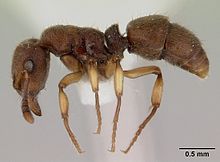
Myrmicinae is a subfamily of ants, with about 140 extant genera; their distribution is cosmopolitan. The pupae lack cocoons. Some species retain a functional sting. The petioles of Myrmicinae consist of two nodes. The nests are permanent and in soil, rotting wood, under stones, or in trees.

Odontomachus is a genus of ants commonly called trap-jaw ants found in the tropics and subtropics throughout the world.

Huberia brounii is a species of ant in the genus Huberia, endemic to New Zealand.

Iridomyrmex is a genus of ants called rainbow ants first described by Austrian entomologist Gustav Mayr in 1862. He placed the genus in the subfamily Dolichoderinae of the family Formicidae. It has 79 described species and five fossil species. Most of these ants are native to Australia; others are found in Asia and Oceania, and they have been introduced to Brazil, New Zealand, and the United Arab Emirates. Fossil species are known from China, France, and the United States.

Crematogaster is an ecologically diverse genus of ants found worldwide, which are characterised by a distinctive heart-shaped gaster (abdomen), which gives them one of their common names, the Saint Valentine ant. Members of this genus are also known as cocktail ants because of their habit of raising their abdomens when alarmed. Most species are arboreal (tree-dwelling). These ants are sometimes known as acrobat ants.
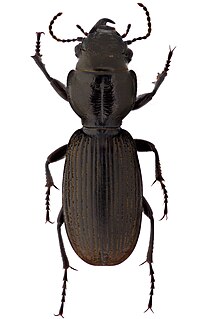
Mecodema oconnori is a large-bodied species of ground beetle endemic to the lower half of the North Island, New Zealand. It is mainly found in native forest habitats on the western side of the Tararua and Ruahine Ranges, but is also found in the Manawatu Gorge and some other eastern localities.

Crematogastrini is a tribe of myrmicine ants with 64 genera and 8 fossil genera.
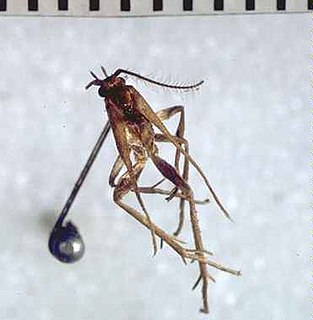
Campbellana is a genus of moths of the Carposinidae family, containing only one species, Campbellana attenuata. This species is endemic to the Campbell Islands of New Zealand.

Parienia is a genus of moths belonging to the subfamily Olethreutinae of the family Tortricidae. This genus was described by Edward Meyrick in 1881. It consists of only one species, Parienia mochlophorana, which is endemic to New Zealand.
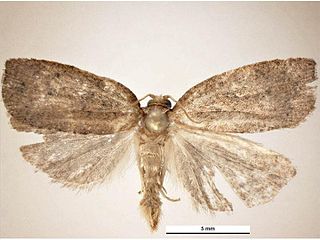
Planotortrix octo is a moth of the family Tortricidae. It is endemic to New Zealand, where it is found in both the North and South islands.
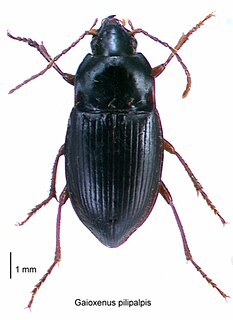
Gaioxenus is a genus of beetles in the family Carabidae. Gaioxenus pilipalpis is the only species in the genus. This genus and species was first described by Thomas Broun in 1910. Broun based the descriptions on specimens he collected in Raurimu in the Manawatū-Whanganui region of New Zealand. Gaioxenus pilipalpis is endemic to New Zealand.
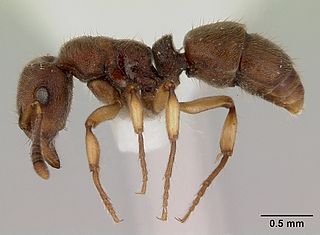
Heteroponera is a genus of ants in the subfamily Heteroponerinae. The genus is known from the Neotropics and Australasia.

Planotortrix notophaea, the blacklegged leafroller, is a species of moth in the family Tortricidae. It is endemic to New Zealand. It was also present near Sydney in Australia, but this population is thought to be extinct.

Sagola is a genus of beetles in the Staphylinidae family. It was first described by the entomologist David Sharp in 1874. The New Zealand species within the genus were revised in 2014 with numerous new species being described.
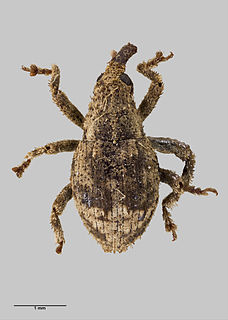
Didymus metrosideri is an endemic weevil from the Kermadec Islands in New Zealand. This species was discovered by W. L. Wallace during the 1908 Kermedec Islands expedition.
A list of the species of Hymenoptera from New Zealand; currently listing the 'stinging wasps' (Aculeata), which includes ants, bees, and social wasps.

Carex buchananii, common names Buchanan's sedge, cutty grass, is a species of sedge. It is endemic to New Zealand, being found on both the North and South Islands.
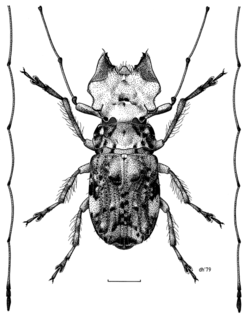
Hoherius meinertzhageni, the ribbonwood fungus weevil, is an endemic New Zealand beetle that has been recorded feeding on the ribbonwood species Plagianthus regius and Plagianthus divaricatus and the mountain lacebark, Hoheria glabrata.
